Located on the Olympic Peninsula in Washington, Olympic National Park is one of America’s most diverse wilderness areas. The park’s distinct ecosystems include several important habitats, all ecologically significant. From its tallest, glacier-tipped peak to its rocky Pacific coastline, these are 10 incredible facts about Olympic National Park.
1. It’s Home to Several Endemic Species

The Olympic marmot is one of the park’s endemic species.
©Paul A Smith/Shutterstock.com
Olympic National Park is known for its impressive wildlife diversity. However, it’s also home to many endemic species that can’t be found anywhere else on the planet. The Olympic marmot and the Olympic torrent salamander are two species that only live within the confines of this spectacular Washington National Park.
In addition to being home to these remarkable endemic species, Olympic National Park is also a refuge for threatened and endangered species. The northern spotted owl, the Ozette Lake sockeye salmon, and the Puget Sound steelhead are just some examples of threatened animals that can be found in Olympic National Park. Endangered species like the short-tailed albatross also call this incredible wilderness their home.
2. It’s More Than Just a National Park
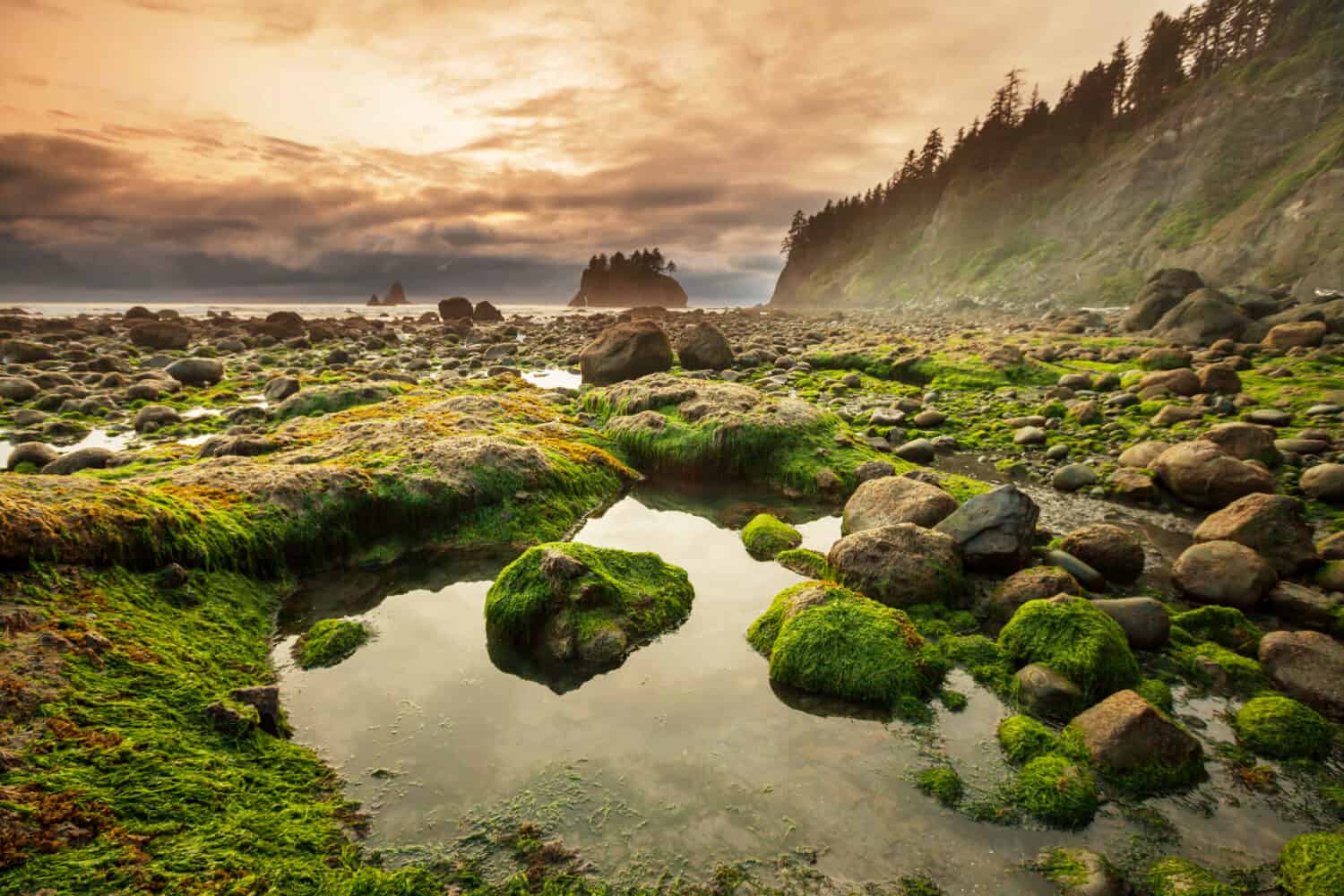
Olympic National Park is also a UNESCO World Heritage Site.
©Galyna Andrushko/Shutterstock.com
The diverse ecosystems of Olympic National Park make it an ideal habitat for a variety of wildlife. While the Washington wilderness is now famed as a national park, over time, it has evolved and has a long and fascinating history. In the late 1890s, the Olympic Peninsula gained national recognition as many naturalists explored the area, causing the vast area to be designated as a national monument in 1909. After overwhelming public support (and a visit to the area), President Franklin Roosevelt then designated the area as “officially” a national park. In the years since, Olympic National Park has also been designated an International Biosphere Reserve (1976) and a UNESCO World Heritage Site (1981).
3. Over 95% Is Designated Wilderness
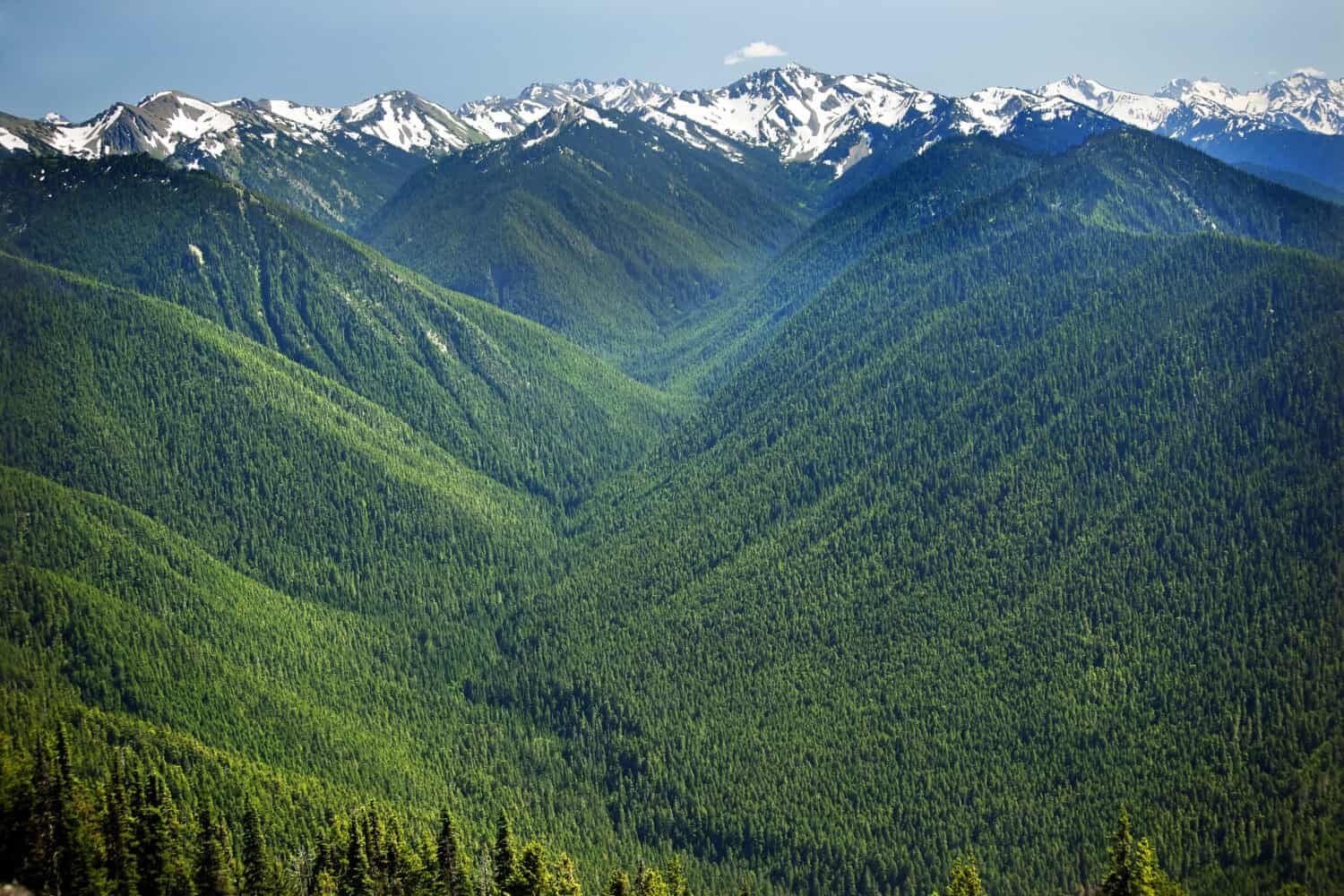
Olympic National Park’s designated wilderness remains pristine and untouched.
©Bill Perry/Shutterstock.com
Another incredible fact about Olympic National Park is that the majority of its landscape (95%) is designated wilderness. The park includes three distinct ecosystems: a temperate rainforest, glacier-topped mountains, and a 73-acre coastline. One of the largest wilderness areas in the lower 48 states, Olympic National Park’s unspoiled landscapes are unique to its visitors and the diverse species that call the park home.
The park also contains one of the last remaining areas of intact primeval forest in the country. This pristine tract is an essential wildlife habitat because of its moist conditions. It’s also home to many species, including northern spotted owls.
4. It’s Famous for Its Tidepools
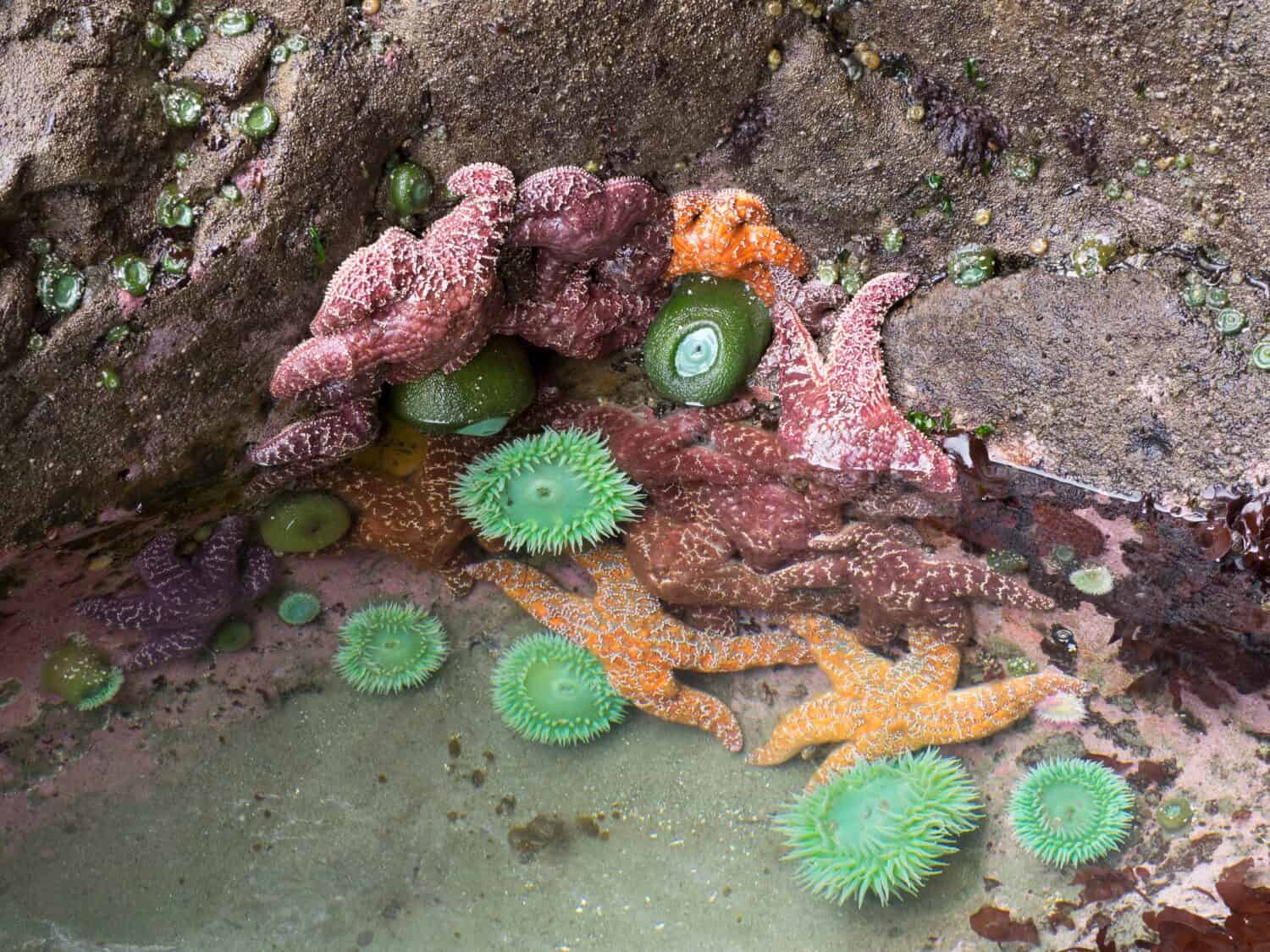
The park’s tidepools are home to many diverse invertebrate species.
©Danita Delimont/Shutterstock.com
The variety of habitats inside Olympic National Park is a testament to its incredible diversity. While the park may be famous for its towering mountains, it’s also home to many coastal marine species. Most significantly, the park’s tidepools are a haven for a plethora of invertebrate species and small marine mammals. These tidepools are bustling with aquatic life, offering visitors a diverse microcosm of the park’s remarkable diversity.
5. It’s Home to Over 1,100 Plant Species
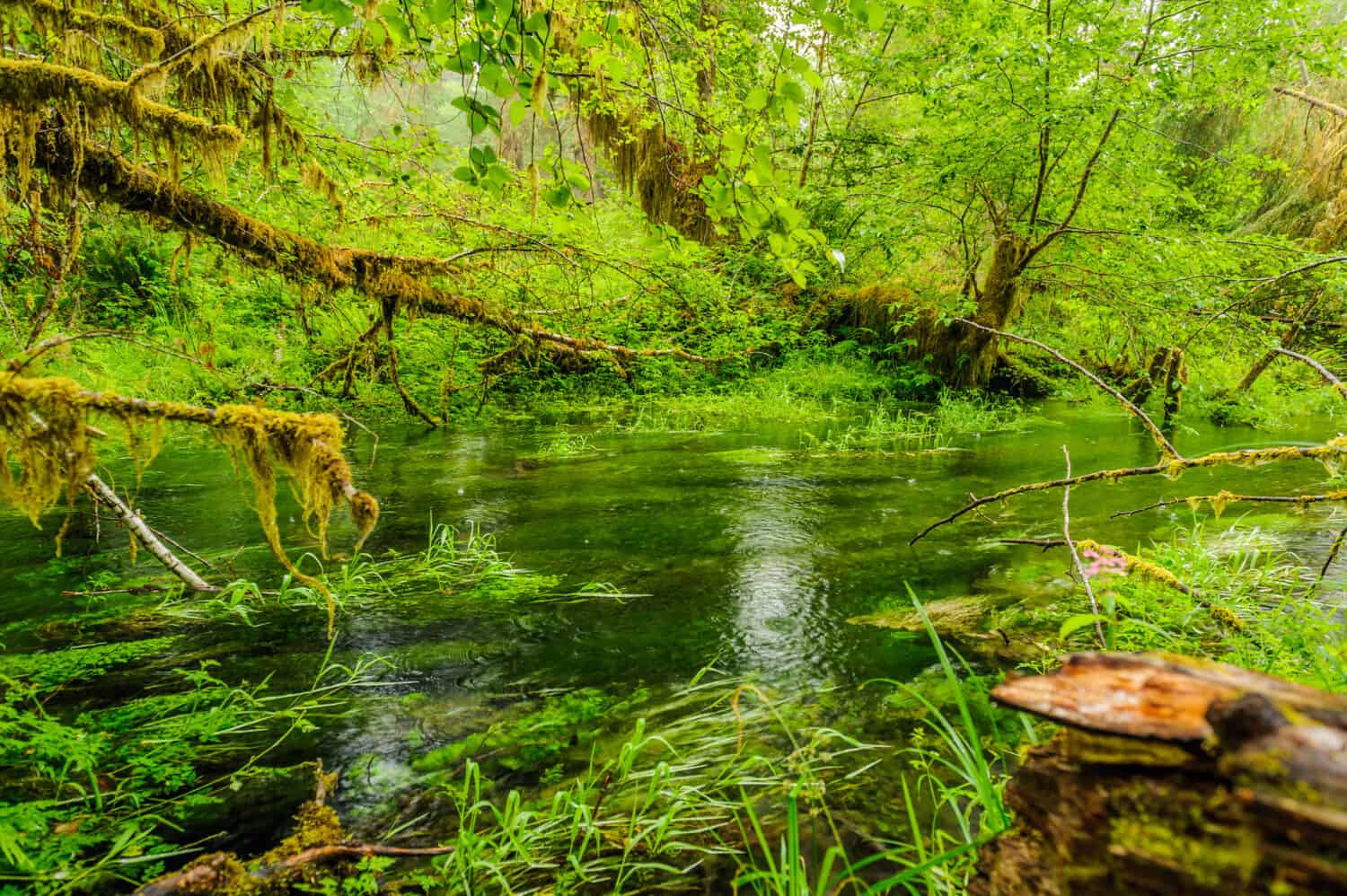
The park is home to abundant and varied plant life.
©Pierrette Guertin/Shutterstock.com
The rugged mountain peaks, rocky coastline, and numerous waterways of Olympic National Park contain multitudes both in landscape and wildlife diversity. However, the meadows and forests contained within the over 920,000-acre park also host over 1,100 species of plants. Due to the park’s dramatic changes in elevation, precipitation, and climate, plant life is abundant, from its highest alpine peaks to its more temperate rainforests. Incredibly, over 1,450 types of vascular plants grow on the Olympic Peninsula alone.
6. It Has Over 650 Archeological Sites
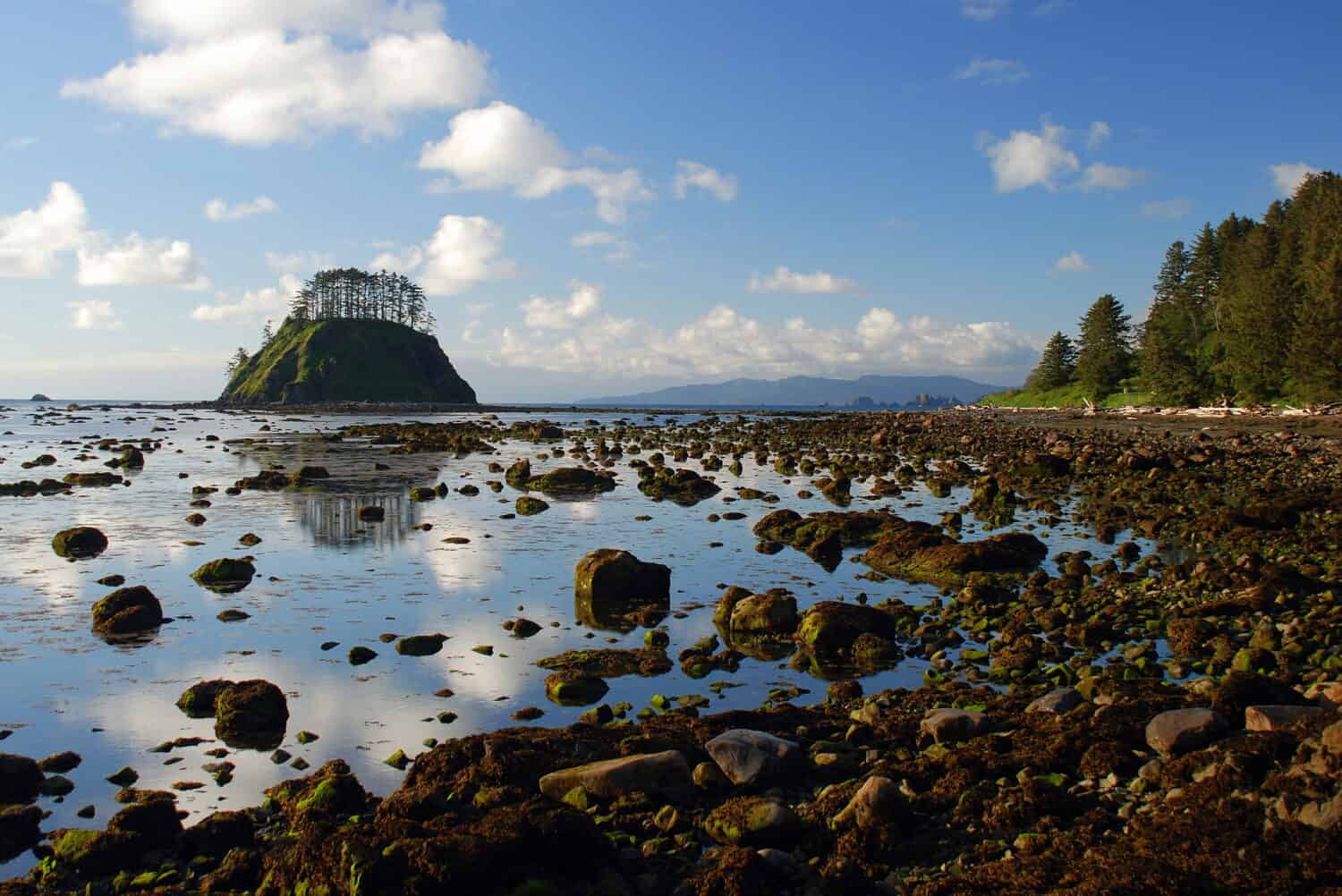
Archeological sites, such as Lake Ozette, are rich in cultural history.
©Mike Peters/Shutterstock.com
One of the most incredible facts about Olympic National Park is that it’s not only famous for its biodiversity. The park itself is also culturally significant, and its over 650 archeological sites explore thousands of years of human history and settlement in the lands in and around Olympic National Park. Additionally, there are several historic sites scattered throughout the park’s landscape. These sites also reveal clues to a more recent history, namely the over 200-year span of human exploration throughout the Pacific Northwest. Homesteads, archeological ruins, and remnants of communities past offer an important glimpse into the Olympic Peninsula’s diverse natural history and cultural importance.
7. It Has 60 Active Glaciers
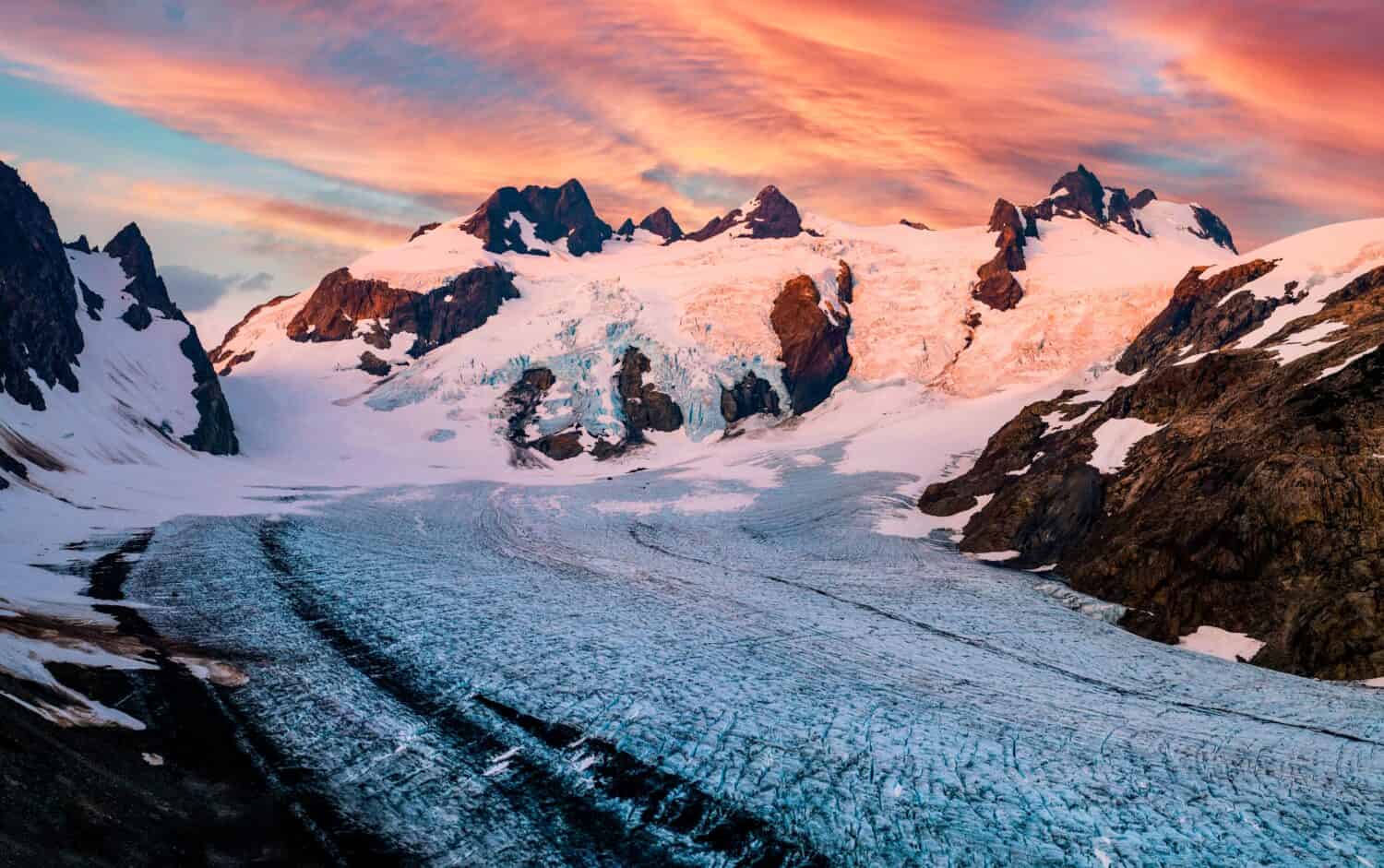
Glaciers are essential to the ecology and geology of Olympic National Park.
©Tobin Akehurst/Shutterstock.com
Olympic National Park is famed for its glacier-topped mountains, often considered the crowning jewel of the vast landscape. However, these towering peaks also tell an interesting story, most notably through the terrain’s 60 active glaciers. Both ecologically and geologically significant, Olympic National Park’s glaciers mark millions of years of mountain activity on the Olympic Peninsula. The park’s glaciers, responsible for shaping the area’s geography in eons past, continue to influence the changing landscape as they shift, move, and ultimately shrink over time. Today, these glaciers tell an important story of the park’s past and create a blueprint for its future.
8. Its Waterways Are Major Wildlife Habitats

The park’s waterways provide diverse habitats for both fish and marine mammals.
©Ethan Daniels/Shutterstock.com
While the park’s vast forests, unspoiled meadows, and rocky coastlines are famed for their diverse ecology, the park’s waterways also contain many important habitats for a variety of land- and water-based species. In addition to the nearby Pacific Ocean, the park’s 10 major rivers provide a home to approximately 37 species of native fish. However, it’s not just fish that call these teeming waterways their home. A variety of frogs, toads, and salamanders can also be found within Olympic National Park’s ponds, lakes, and streams. Additionally, many species also thrive along the Olympic Coast’s 73-mile coastline, home to both invertebrates and approximately 30 types of marine mammals.
9. It’s Home to a Temperate Rainforest
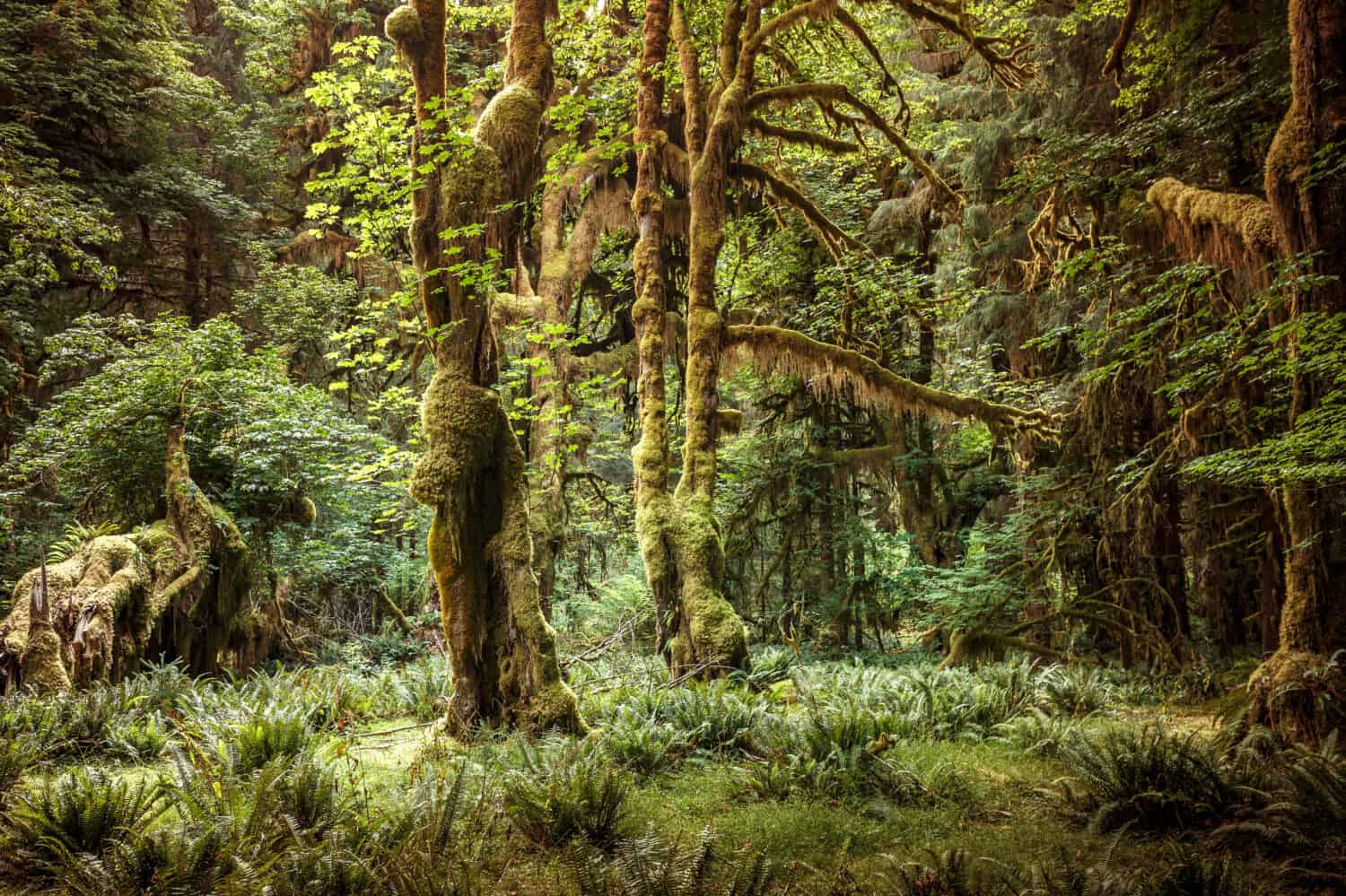
Hoh Rainforest is an essential wildlife habitat.
©sunsinger/Shutterstock.com
From its highest peaks to its lowest coastal waterways, Olympic National Park is home to many distinct wildlife habitats. However, it’s the park’s temperate rainforest, the Hoh Rainforest, that may contain the area’s most ecologically significant ecosystems. Named for the river that runs through the park from Mount Olympus to the Pacific Coast, the lush forest landscape contains several plant and animal species. Within its dense vegetation can be found both coniferous and deciduous tree species, along with various mosses and ferns that provide essential habitats to the park’s large mammals. Significantly, the Hoh Rain Forest also sees the majority of the park’s rainfall each year.
10. Tallest Mountain, Largest Lake
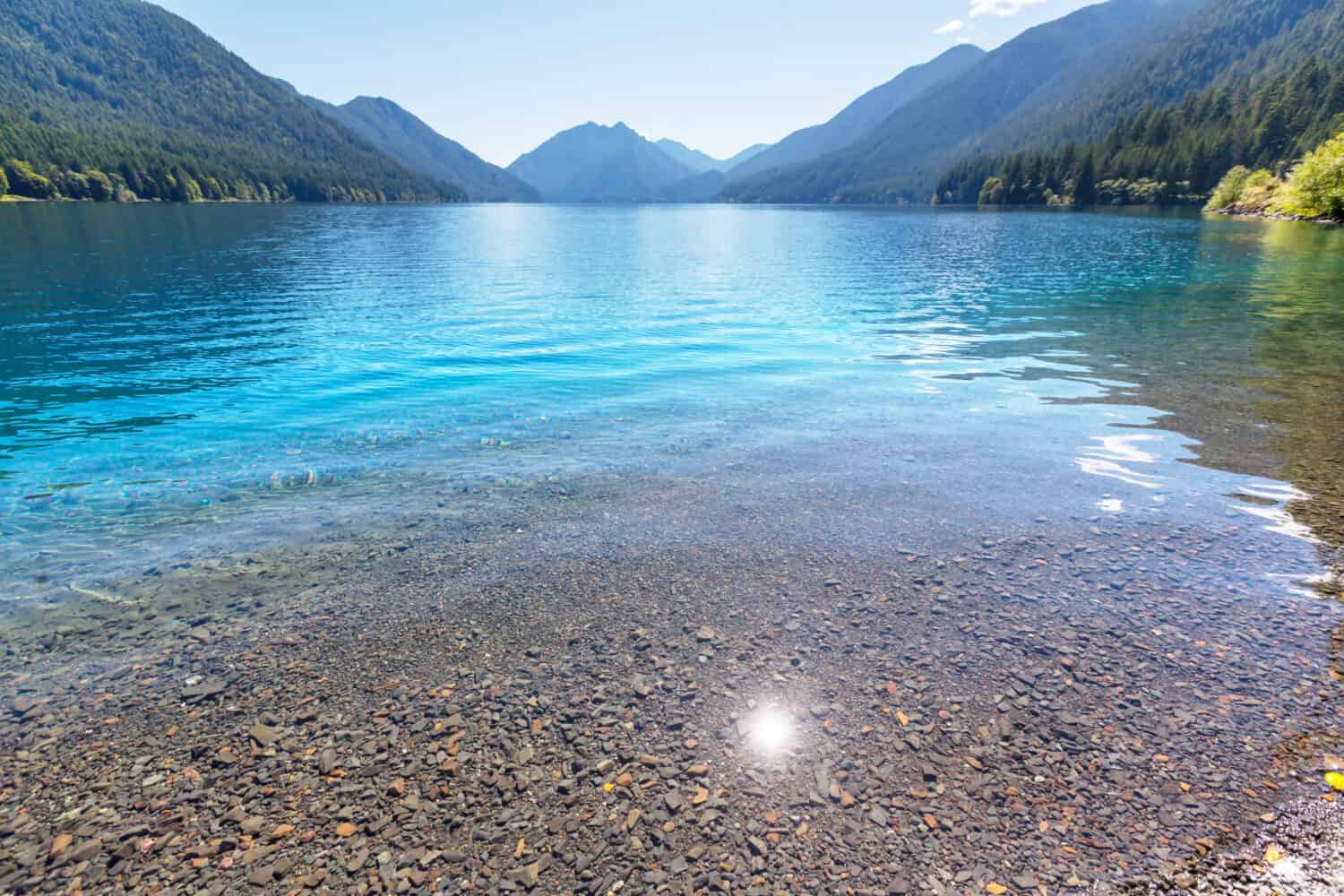
Lake Crescent’s waters are crystal clear due to a lack of nitrogen.
©Galyna Andrushko/Shutterstock.com
Some of the most incredible facts about Olympic National Park involve its overwhelming ecological diversity. This diversity is not only contained within its wildlife population, but it is also an intrinsic part of its natural landscape. The park contains multitudes within its teeming ecosystems. This includes two of the Olympic Peninsula’s most iconic geographical features, Lake Crescent and Mt. Olympus.
The Largest Lake
Lake Crescent is the largest lake in Olympic National Park, and it has many unique characteristics that set it apart from the area’s numerous waterways. A staple of park recreation, the lake is significant not only for its beauty but also for its mystery. With a depth of over 620 feet, the lake’s cold waters are mostly devoid of algae due to a lack of nitrogen. This gives the water its remarkable crystal-clear hue. Geographically significant, Lake Crescent’s color, clarity, and makeup make it one of Olympic National Park’s most enduring landmarks.
The Tallest Mountain
But it’s not just the park’s waterways that define its landscape. Known for its rugged, glacier-topped mountains, Olympic National Park is also home to the tallest peak in the Olympic range, Mt. Olympus. Towering above the region at approximately 7,965 feet, Mt. Olympus is said to have been named for its counterpart in Greek mythology. Obscured by other mountain peaks and largely isolated, Mt. Olympus retains an air of mystery. However, some adventurous mountaineers have scaled its dramatic, glacier-topped peaks.
Olympic National Park is one of the largest wilderness areas in the United States. Home to three distinct ecosystems, including its Pacific coastline, snowy, glacier-topped mountains, and vast forests and meadows, the park provides a variety of habitats to both land and marine mammals. However, the park’s ecology is not the only thing that sets it apart. Contained within its vast multitudes are important stories about the land and its people, geological and cultural clues to the park’s impressive history that continues to evolve to this day.
Summary of Facts About Olympic National Park
| Number | Facts |
|---|---|
| 1. | The park has several endemic species including the Olympic marmot and the Olympic torrent salamander. |
| 2. | Olympic National Park is also a UNESCO World Heritage Site and International Biosphere Reserve. |
| 3. | 95% of Olympic National Park is designated wilderness, remaining pristine and untouched. |
| 4. | The park’s tidepools are home to many invertebrate and marine species. |
| 5. | The over 920,000-acre park is home to over 1,100 plant species. |
| 6. | Olympic National Park is also culturally significant and is home to over 650 archeological sites. |
| 7. | 60 active glaciers can be found among the park’s towering mountains. |
| 8. | The ponds, lakes, streams, and Pacific coast are home to many marine species. |
| 9. | Olympic National Park’s Hoh Rainforest is one of the area’s most essential ecosystems. |
| 10. | The park is home to two impressive Pacific Northwest landmarks, Mt. Olympus and Lake Crescent. |
The photo featured at the top of this post is © A. Gustavson/Shutterstock.com
Thank you for reading! Have some feedback for us? Contact the AZ Animals editorial team.







